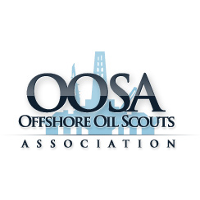Inadequate Job Planning Results in Atmospheric Release of Gas
Effective Date: 4/4/2005
| U.S. Department of the Interior |
| Safety Alert No. 229 4 April 2005 | Contact: Glenn Woltman |
Inadequate Job Planning Results in Atmospheric Release of Gas
Failure to isolate the energy source during platform maintenance work allowed gas to migrate from the sales pipeline back through production equipment resulting in the total evacuation of gas to the atmosphere from a 30-inch pipeline. The incident occurred after pipeline personnel had closed their sales and riser valves at the platform and bled the system down for valve maintenance work. Later during the day, production personnel decided to re-pressure the platform system to move condensate built up in the vessels down the pipeline. As the system pressure was increasing, valves off the condensate coalescer began to leak. Gas started blowing back through the dump line and out the flare boom while personnel began removing the leaking valves. Personnel were ordered to evacuate. Gas continued to migrate from the sales pipeline back through the production train, eventually escaping through the open-ended piping at the coalescer over the next 32 hours until such time as the pipeline had essentially been bled off. At that time, pipeline personnel were able to board the platform and close the manual sales valve, effectively isolating the energy source.
MMS concluded that (1) failure to develop a detailed written procedure (JSA) for the work to be performed prevented personnel from identifying and properly isolating the energy source, and (2) the lack of communications between pipeline and production personnel, coupled with the failure to utilize the company’s stop work authority policy, allowed critical warning signs leading up to the incident to be overlooked, and (3) failure to use lock-out/tag-out procedures to properly isolate the production equipment and process piping indirectly resulted in the mishap.
The MMS recommends the following:
· Supervisors must provide adequate job instructions and planning prior to the work.
· Hazards must be identified as work proceeds, and a “stop work policy” in place as the job scope changes.
· Personnel must be familiar with and utilize lock-out and tag-out procedures to isolate equipment and process piping during work programs.
· Simultaneous operations must be clearly communicated to all appropriate parties, detailing all site-specific procedures prior to work being implemented.
An investigation of this incident has been conducted, and the report is available on the MMS website:
http://www.gomr.boemre.gov/homepg/offshore/safety/acc_repo/districtreports.html






